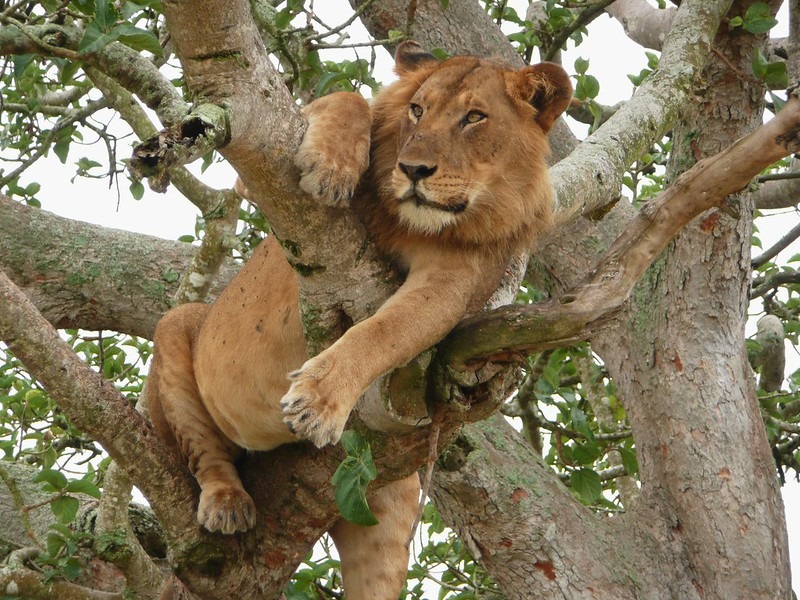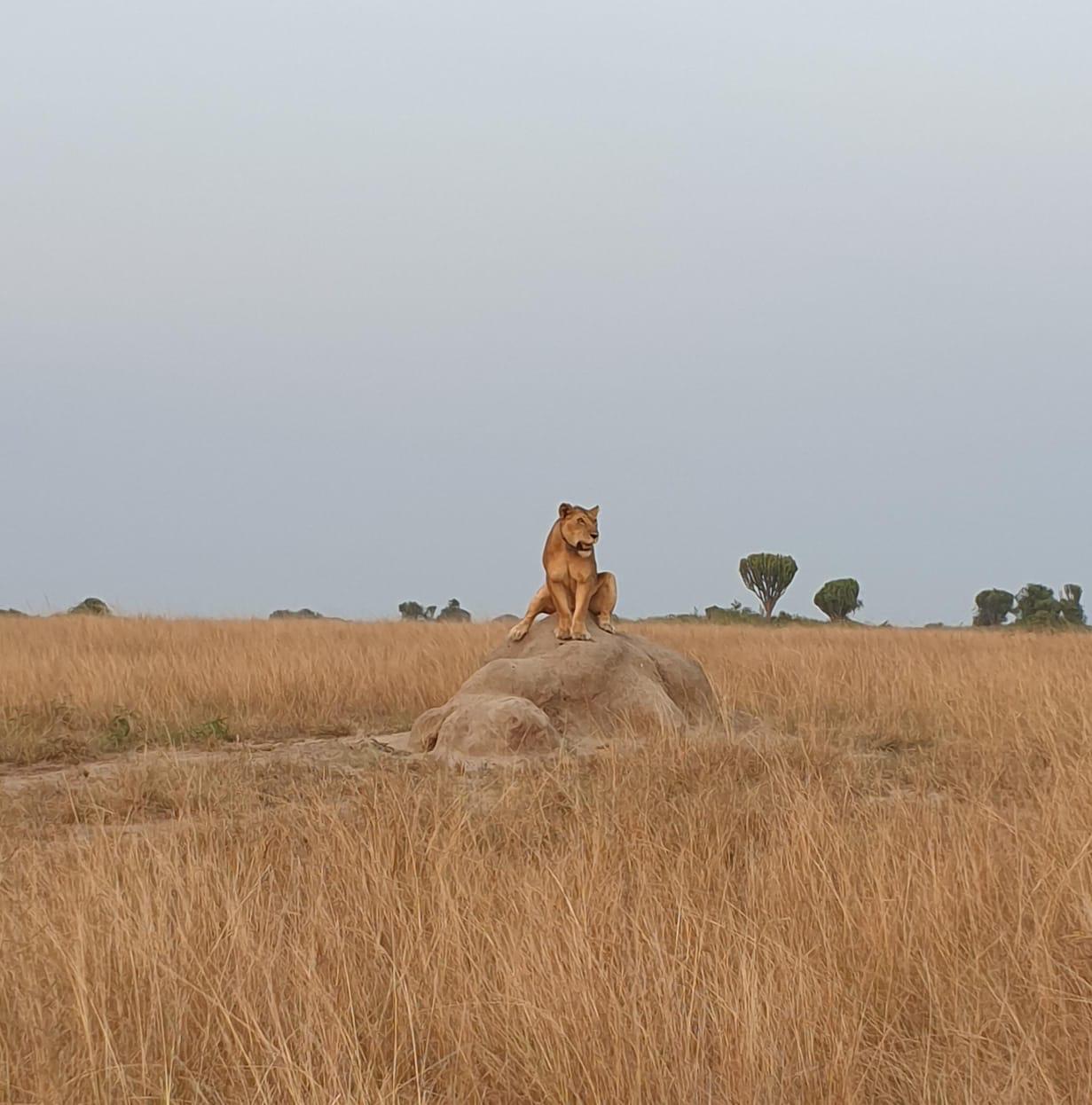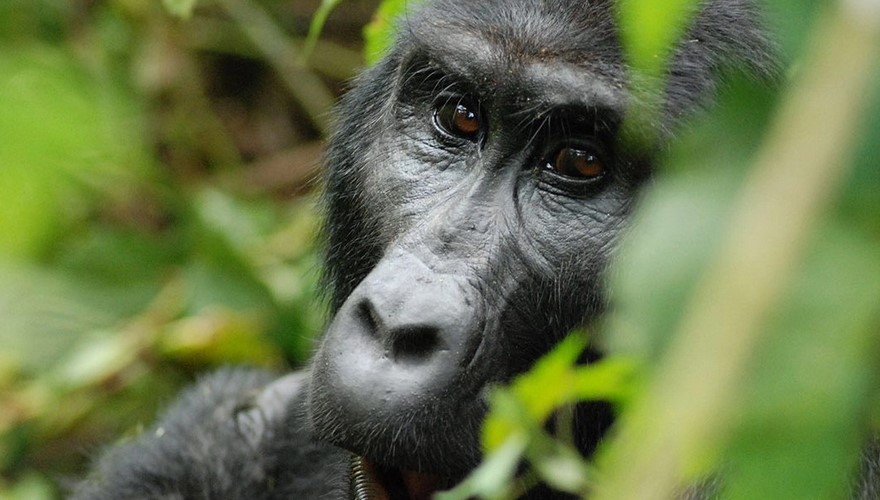Visit Queen Elizabeth Park: Safaris

Visit Queen Elizabeth Park: Facts and Safari Adventures
Visit Queen Elizabeth Park to experience one of Uganda’s most exciting safari destinations, located in the southwestern region and celebrated worldwide for breathtaking wildlife.
Queen Elizabeth National Park was declared a national park in 1952 alongside Murchison Falls National Park, the largest park in Uganda, and occupies 1,978 square kilometers.
Unique populations of antelopes, elephants, hippos, Nile crocodiles, buffaloes, butterflies, and colorful bird species have been recorded here, making it a thrilling safari destination.
Visit Queen Elizabeth Park for Wildlife
The park is recognized as home to over 95 mammal species, including the largest populations of African elephants, hippos, buffaloes, and lions in East Africa.
According to statistics, more than 5,000 hippos, 3,000 elephants, and 1,000 buffaloes have been counted within the park boundaries.
Numerous antelope species such as sitatungas, reedbuck, topis, duikers, and Uganda kobs can also be spotted in different areas.
The Kasenyi plains, famous as the breeding grounds for Uganda kobs, are regularly visited by lions that prey on them, providing unforgettable safari moments.
Meanwhile, the Kazinga Channel remains the permanent water source of the park, hosting crocodiles, elephants, and hundreds of bird species along its shores.
Birding Paradise in Queen Elizabeth National Park
When you visit Queen Elizabeth Park, bird watching will easily become a highlight of your safari. Over 600 bird species, including the rare shoebill stork, have been identified here.
These species thrive in the varied ecological habitats of the park such as crater lakes, savanna plains, and wetlands. Because of this diversity, the park has been recognized internationally as one of the best birding destinations in Africa.
Geological Wonders and Rift Valley Location
Queen Elizabeth National Park lies within the western branch of the African Rift Valley, creating dramatic landscapes and natural wonders.
The Rift Valley formed breathtaking features such as crater lakes, escarpments, and the scenic Kazinga Channel, which connects Lake George to Lake Edward.
These geological elements have provided habitats for flora and fauna, enriching the biodiversity that attracts thousands of visitors annually.
Cultural and Historical Background
Initially called Kazinga National Park, the reserve was renamed in 1954 after Queen Elizabeth II visited Uganda. However, the area’s history is older than its gazettement.
The Basongola pastoralists once lived here before smallpox and sleeping sickness forced relocations. After their departure, vegetation flourished, and wildlife populations increased, which eventually led to the declaration of the national park.
Interestingly, crocodiles once disappeared from the Kazinga Channel due to volcanic eruptions affecting water bodies in the Rift Valley. After some time, they recolonized the area via River Mubuku, and today they play a crucial ecological role in maintaining balance.
Why You Should Visit Queen Elizabeth Park
Because of its vast diversity of wildlife, stunning landscapes, birding opportunities, and rich cultural history, the park remains a must-see destination for travelers to Uganda.
Annually, thousands of tourists enjoy game drives, boat cruises, and cultural encounters, leaving with exceptional safari memories.
Plan Your Visit to Queen Elizabeth Park
Visitors are encouraged to plan their safari during the dry seasons between June to October and December to February, when rains are minimal. These months make game drives and nature walks easier, ensuring sightings of abundant wildlife.
Comfortable accommodation options in Kampala and around the park include luxury lodges, mid-range hotels, and budget guesthouses, ensuring every traveler finds a perfect base.
To visit Queen Elizabeth Park and enjoy a once-in-a-lifetime safari, you can book with us at Jeisking Tours. Send an email to info@gorillaugandasafaribookings.com or call directly on +256-775630809 to speak with our reservations team today.




